After a 20-month COVID hiatus, cruises resume in tranquil northern Portugal
The Arizona Republic/USA Today.com — September 19, 2021
ENTRE-OS-RIOS, Portugal – Beneath terraces of vineyards and olive trees in the undulating landscape of northern Portugal so alluring that the region has been named a UNESCO World Heritage Site, a crowd of locals gathered to watch our boat squeeze through one of five narrow locks on the Douro River.
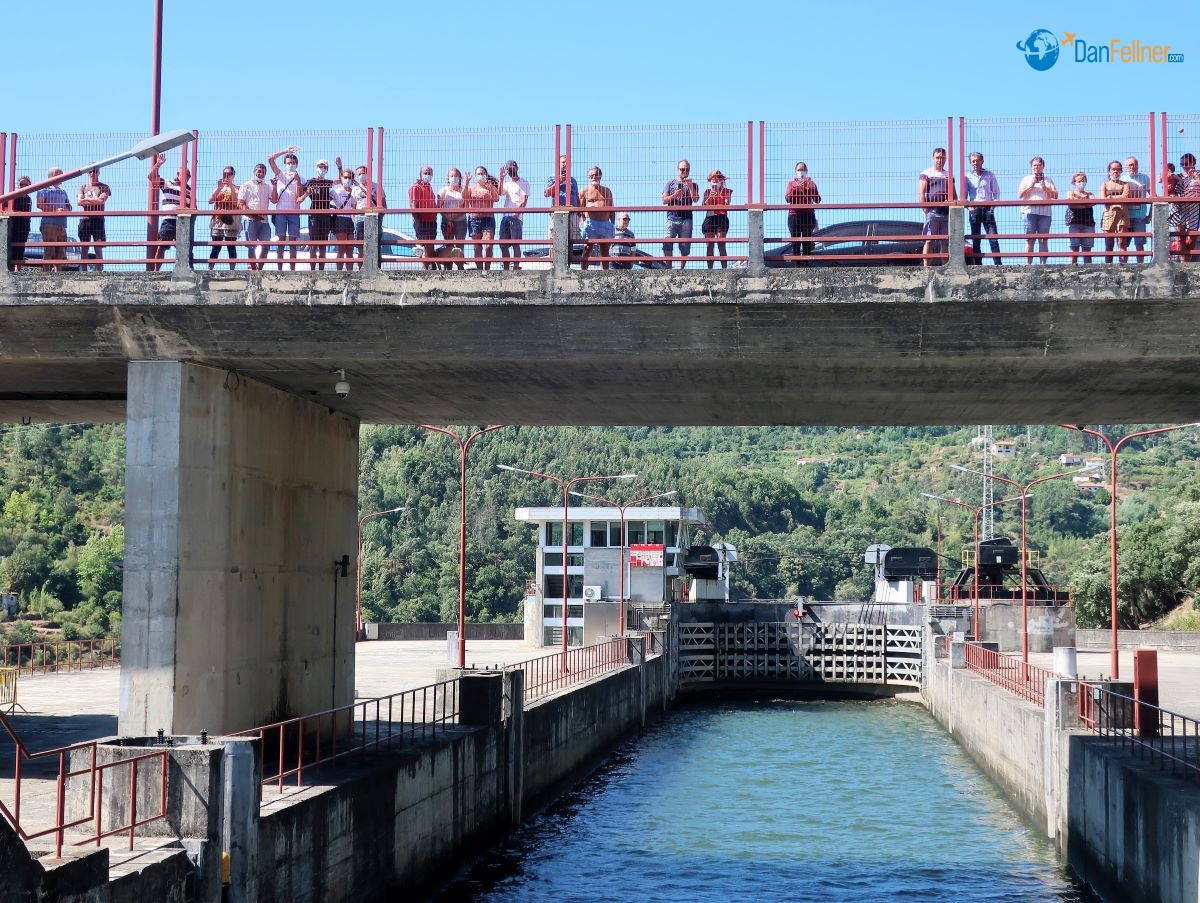
Locals gather to watch the Scenic Azure pass through a lock station on the Douro River in northern Portugal.
Parents lifted children over their shoulders while others waved and cheered from a bridge above the lock as the Scenic Azure headed east toward the Spanish border. I took in the scene from the boat’s glass-enclosed wheelhouse and voiced my surprise at the size of the crowd to the captain. Had all these people come just to watch us pass through a lock?
“It’s like a party for them,” said the Azure’s Capt. Paulo Jesus, who has been piloting vessels on the Douro since 2012. “The Portuguese people love watching the boats.”
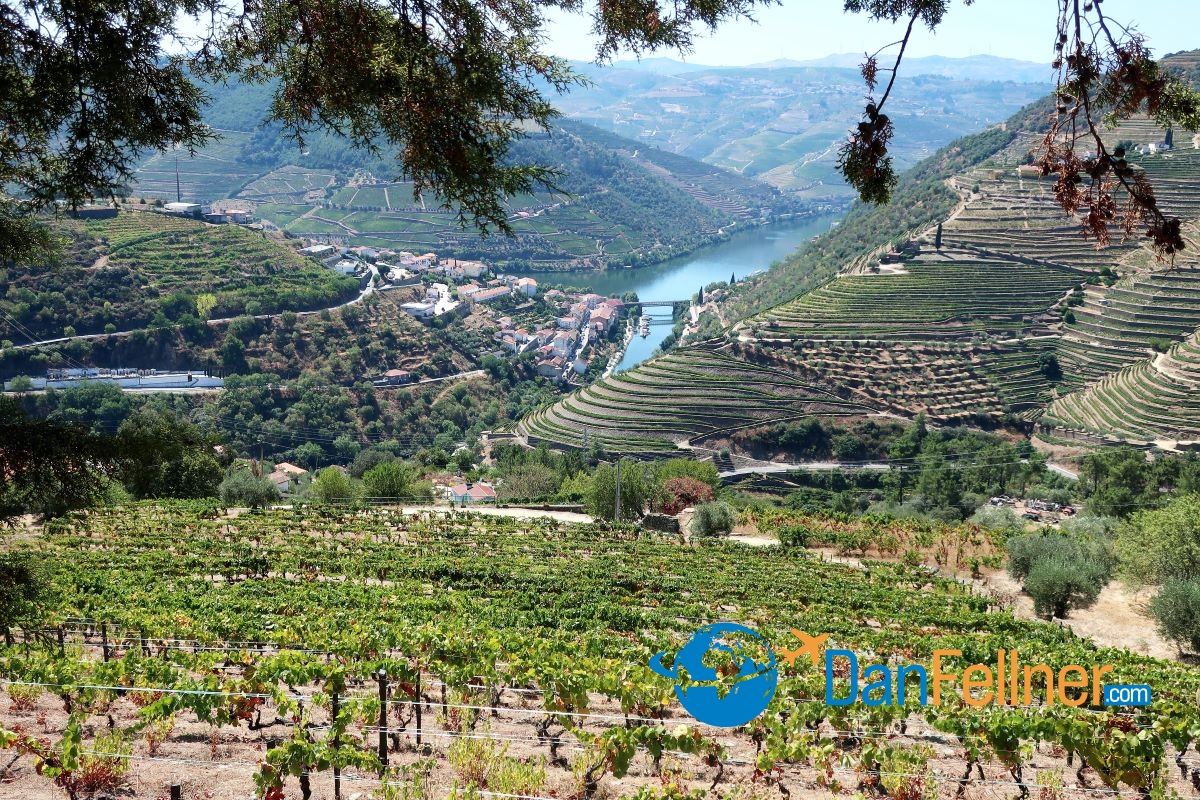
Terraced vineyards in the Douro River Valley in Portugal. The area is known for its production of port wine.
After a 20-month hiatus caused by COVID-19, river cruising has returned to the Douro River Valley. And like the coming fall harvest of the grapes that produce Portugal’s famed port wine, it’s bringing an infusion of hope to the small villages along the river that depend so heavily on tourism.
Scenic Cruises and some of the other large river cruise companies resumed sailing on the Douro in July, although demand is still far from pre-pandemic levels. The Azure, which began cruising the Douro in 2016, has a capacity of 96 passengers. Our 10-day sailing in early August had just 40 passengers – a mix of Americans and English – outnumbered by the 41 Portuguese crew members.

The 96-passenger Scenic Azure docked on the Douro River in Porto, Portugal. Cruises resumed on the Douro in July 2021.
Maria Andrada, general manager of Scenic’s Portugal operations who was onboard for part of our sailing, said bookings on the Azure for the rest of this year’s Douro cruising season – which runs through November – are at about 50 percent capacity. Typically, she said, the boat is full.
“We are in the European Union, but each country has a different policy regarding COVID, which is very hard when you set up an operation,” she said. “It’s been difficult to get passengers on the ships.” But Andrada said Scenic expects full occupancy for its Douro sailings in the 2022 season, scheduled to begin next March.
Roundtrip from Porto
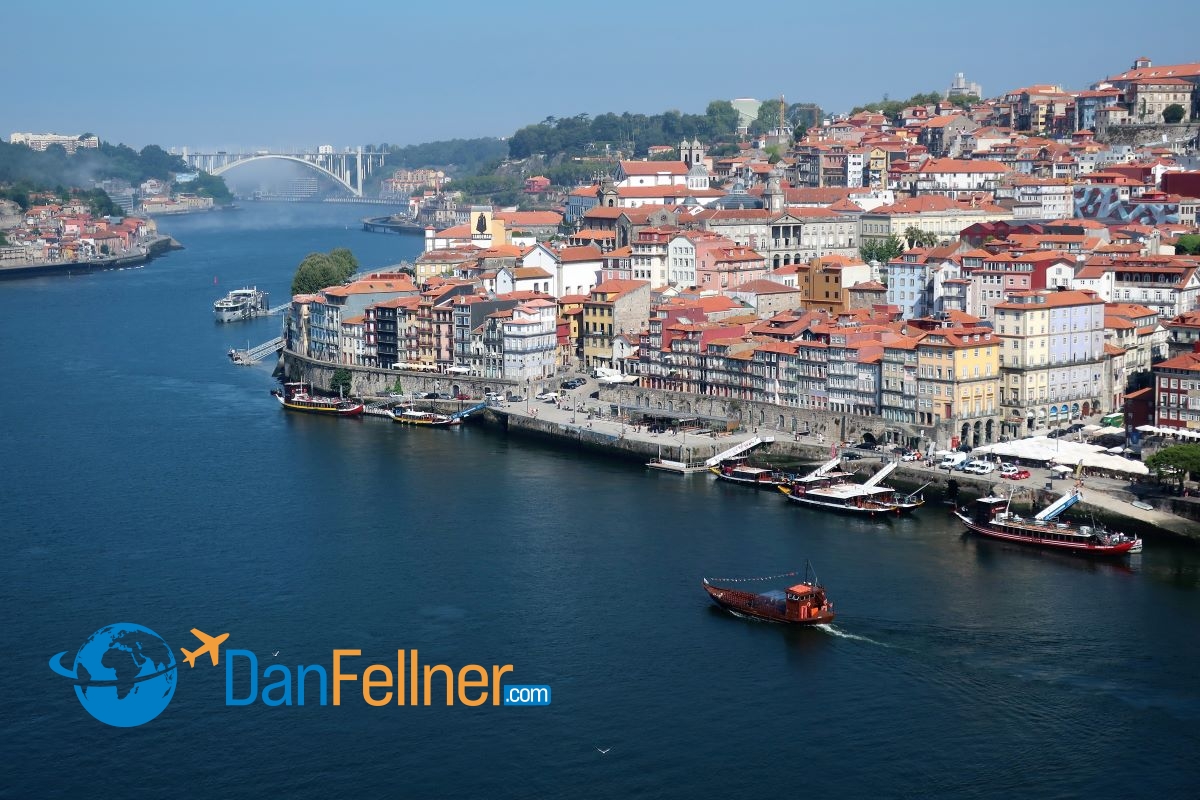
Cruises on the Douro River typically start and end in the picturesque city of Porto in northern Portugal.
Our cruise started and ended in the picturesque city of Porto, on the Atlantic coast at the mouth of the Douro River. Porto is Portugal’s second-largest city; it is 195 miles north of the capital city of Lisbon.
From Porto, we sailed 130 miles to the east through five locks – crossing the border with Spain halfway through the trip – before turning around and cruising downstream back to Porto.
The climate changed dramatically during the sailing. Porto’s proximity to the ocean makes it far more temperate during the hot summer months. Temperatures rose about 25 degrees Fahrenheit – sometimes reaching triple digits – as we sailed inland.
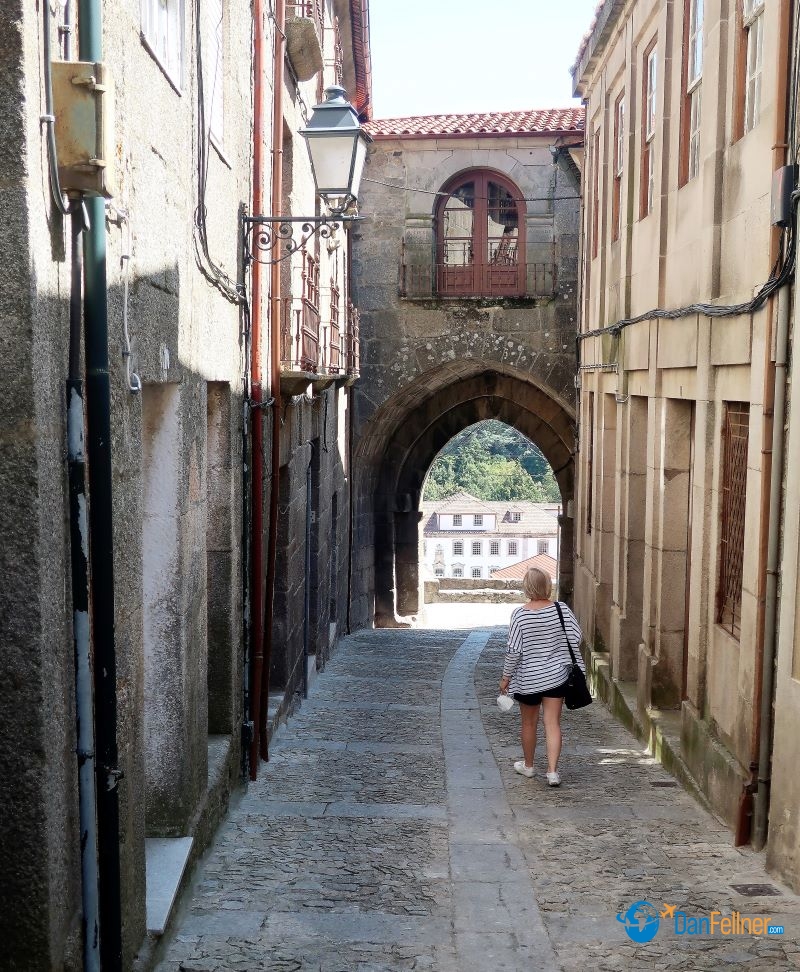
A narrow cobblestone street in the Douro Valley town of Lamego, Portugal.
Along the route, we stopped at several Portuguese towns in the Douro Valley where we walked through narrow cobblestone streets, visited hilltop castles, browsed the fish markets and paddled our way past the town of Pinhão on a two-hour kayaking trip.
One of the highlights was a day trip via bus from the Azure to the historic Spanish city of Salamanca. We happened upon a Saturday wedding ceremony at the 14th-century Cathedral of Santa Maria, complete with Castilian folk music and plenty of confetti.
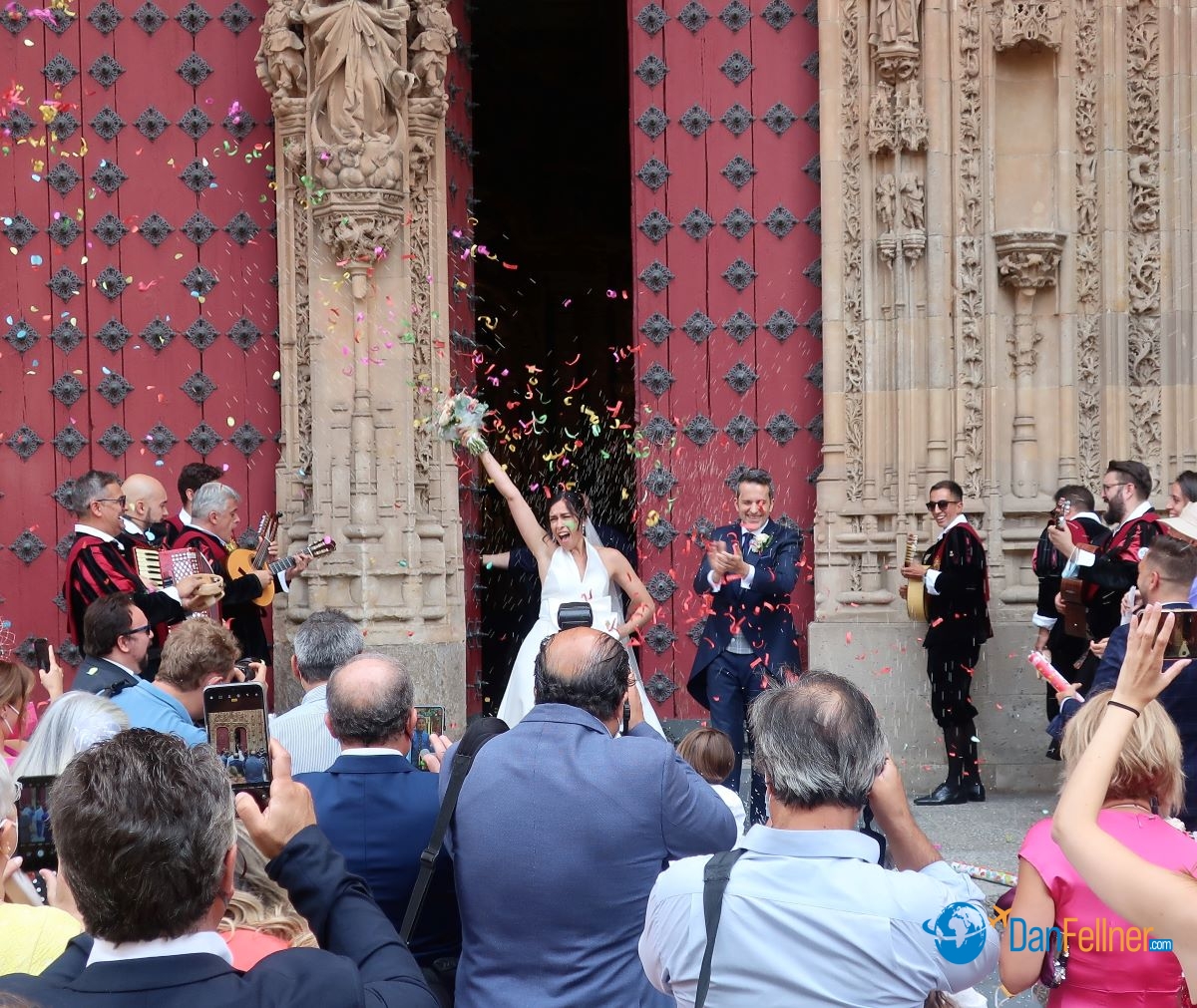
A couple emerges from the 14th-century Cathedral of Santa Maria in Salamanca following their wedding ceremony.
We were immersed in various facets of Portuguese culture through onboard lectures, language classes and cooking demonstrations – sausages and seafood are integral parts of Portuguese cuisine. I especially enjoyed a euphonious performance of the country’s renowned fado music, characterized by its melancholic tunes and lyrics.
Portuguese wine tradition
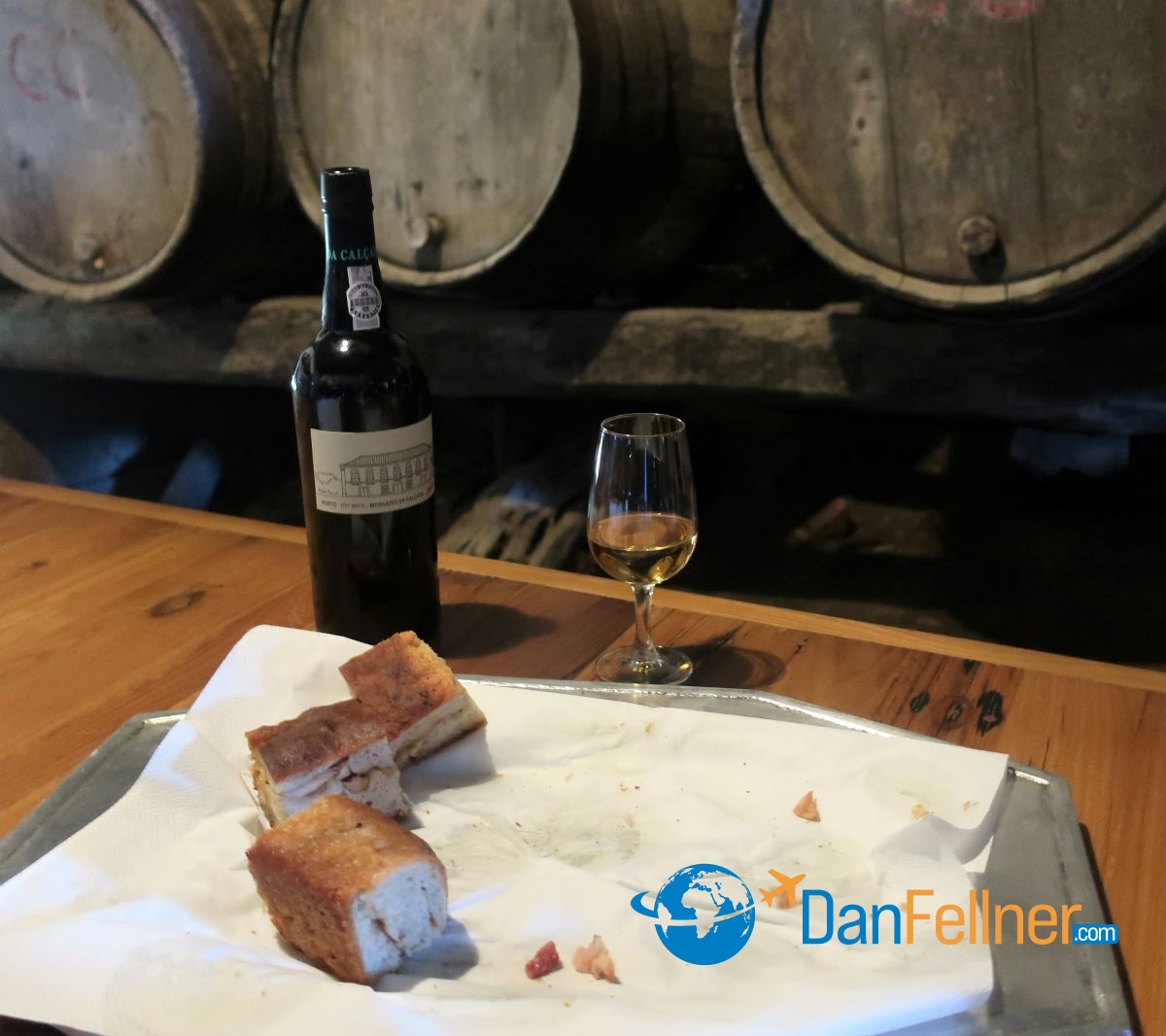
The Douro River Valley in Portugal is famous for its production of brandy-infused port wine.
The Portuguese love their wine. They’ve been making it for about 2,000 years. In 1756, the port vineyards of the Douro became the first winemaking area in the world to be legally demarcated, meaning that only authentic port can be made here.
And they enjoy the fruits of their labor. According to the American Association of Wine Economists, the Portuguese lead the world in per-capita wine consumption, quaffing even more than the French.
More than 110 varieties of grapes are grown in the Douro River Valley. About half are used to make brandy-infused port – perhaps Portugal’s most famous export.
Port, which comes in red and white varieties, is typically sweet and served with dessert. It’s best sipped slowly as the brandy gives it a far greater punch than the table wines produced in the area.
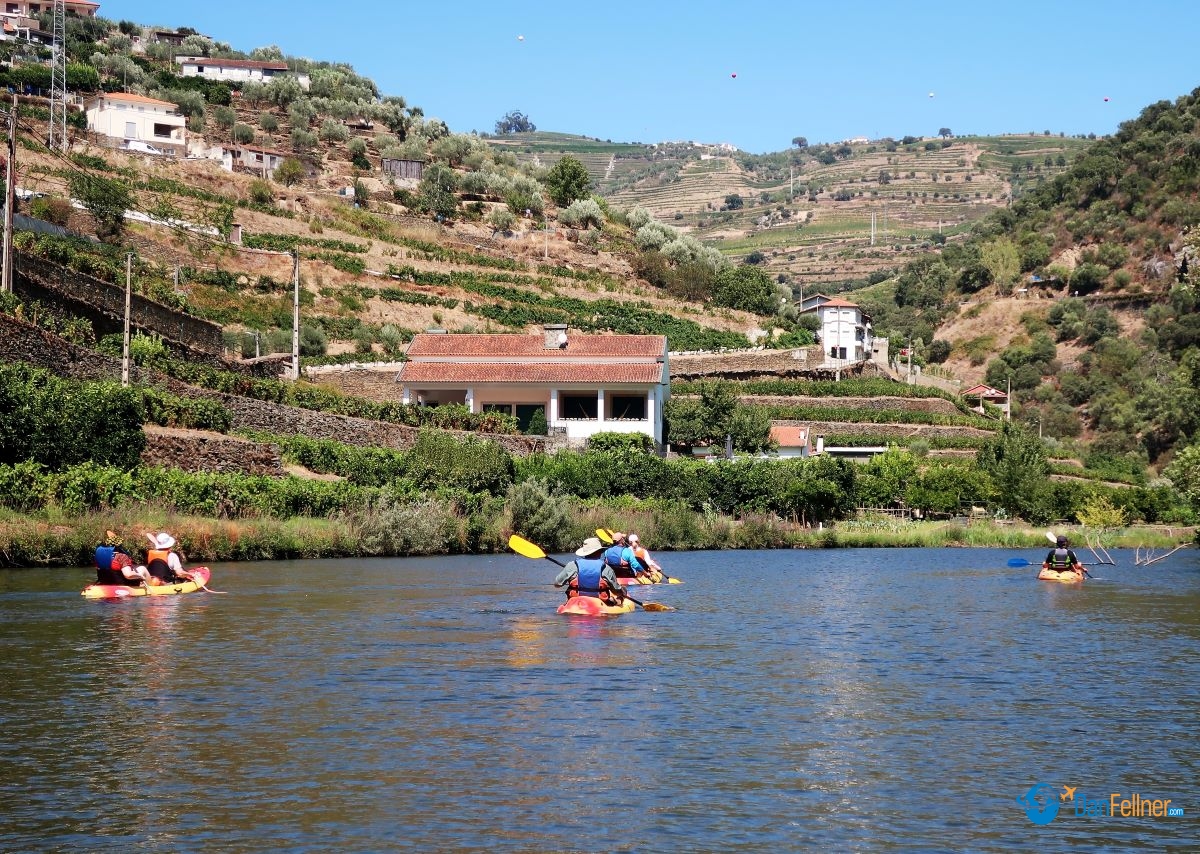
Kayakers paddle past vineyards in the Douro River Valley near Pinhão, Portugal.
We visited several wineries, some of which have been family-owned for centuries. I was surprised to learn that “foot-treading” – stomping grapes by foot to extract the juice – is a tradition that still endures in some of the wineries.
While Portugal is known for being a soccer-crazy country, our cruise director didn’t hesitate when I asked him what was more important to the Portuguese people – soccer or wine.
“The wine culture is absolutely dominant here since pre-Roman times,” Filipe Nunes said. “The average Portuguese drinks two glasses of wine each day, while football (soccer) only happens once or twice a week.”
COVID protocols
We were required to take three COVID-19 tests during the trip – one before boarding the flights to Portugal, a rapid test immediately prior to boarding the boat in Porto and a test administered by nurses onboard two days before flying home. Vaccinations were mandated for all passengers on the Scenic Azure.
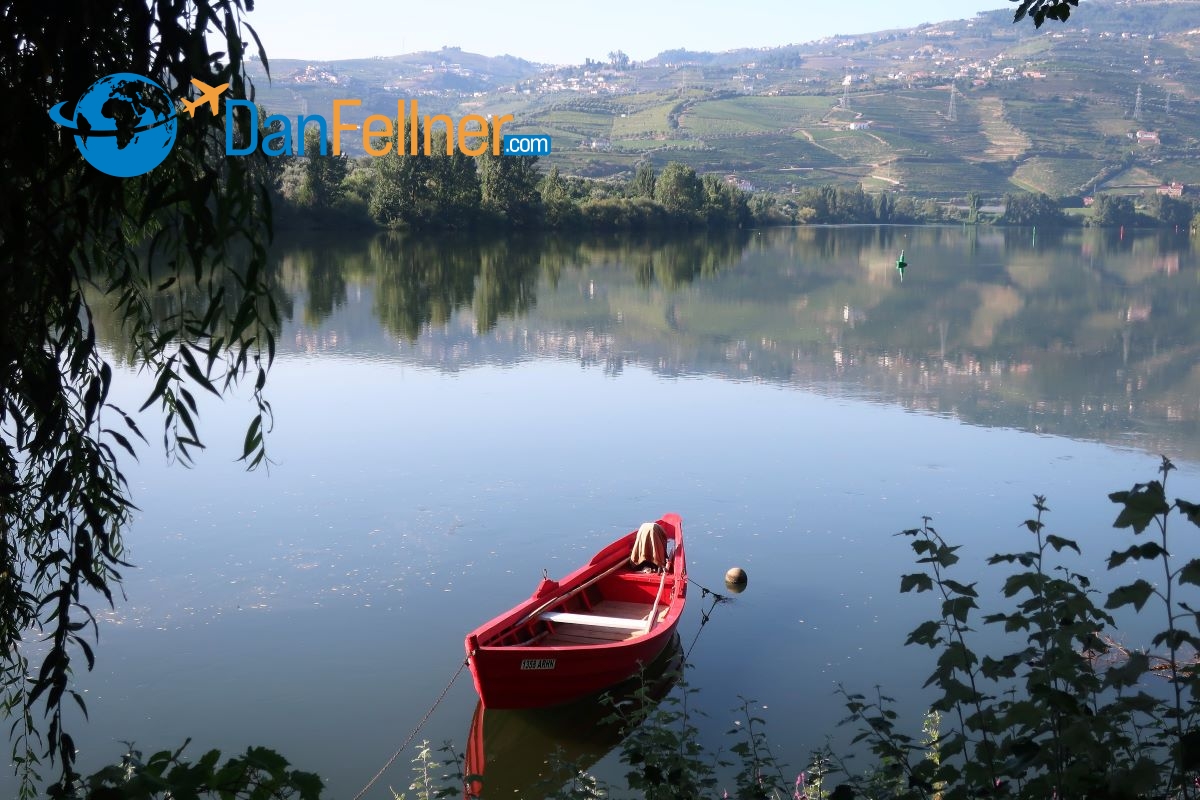
A quiet morning in the Douro River Valley in Peso da Régua, Portugal.
Our temperatures were checked every time we boarded the boat, and we were asked to wear masks throughout the sailing, except when eating and drinking. While on sightseeing tours, we observed that most of the local people wore masks – even when outdoors.
Cruising the Douro offers a more laid-back – and less crowded – experience than on busier European rivers like the Danube, Rhine and Seine. While the architecture tends to be more interesting in the towns on those rivers, the Douro River Valley’s natural beauty is what makes this an appealing choice for travelers looking for a relatively tranquil getaway.

A fisherman tries his luck next to the Scenic Azure in Entre-os-Rios, Portugal.
Lounging on deck and sipping a glass of port while slowly sailing past the hilly terrain full of terraced vineyards and quintas – gleaming white farmhouses with signage proclaiming the brand of wine produced on the site – never grew monotonous.
“It feels like you are in the middle of nowhere,” Andrada said. “You can sail on the Douro River and you don’t see another ship. You don’t see buildings. You don’t see cars. You are there alone looking at the beautiful landscape.”
Websites for more info:
Visit Portugal
Scenic Cruises
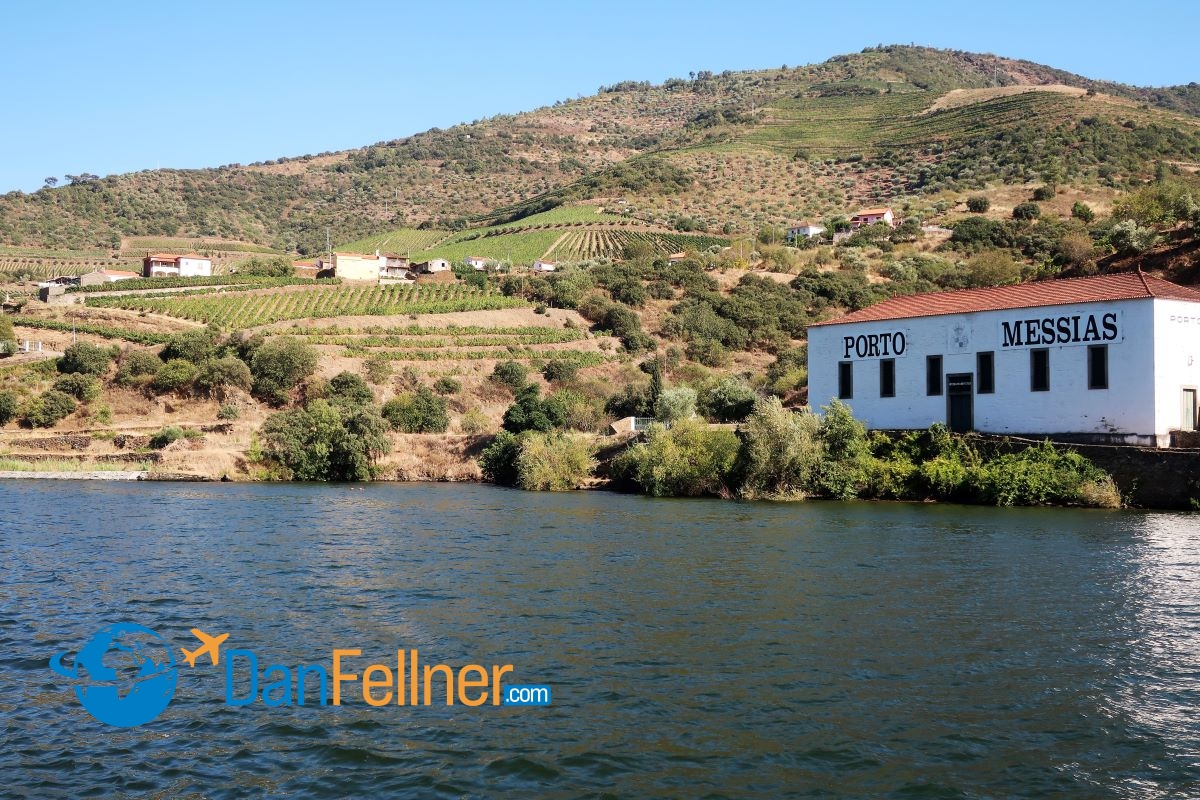
One of numerous quintas – white farmhouses with signage proclaiming the brand of wine produced — in Portugal’s Douro River Valley.
© 2021 Dan Fellner



